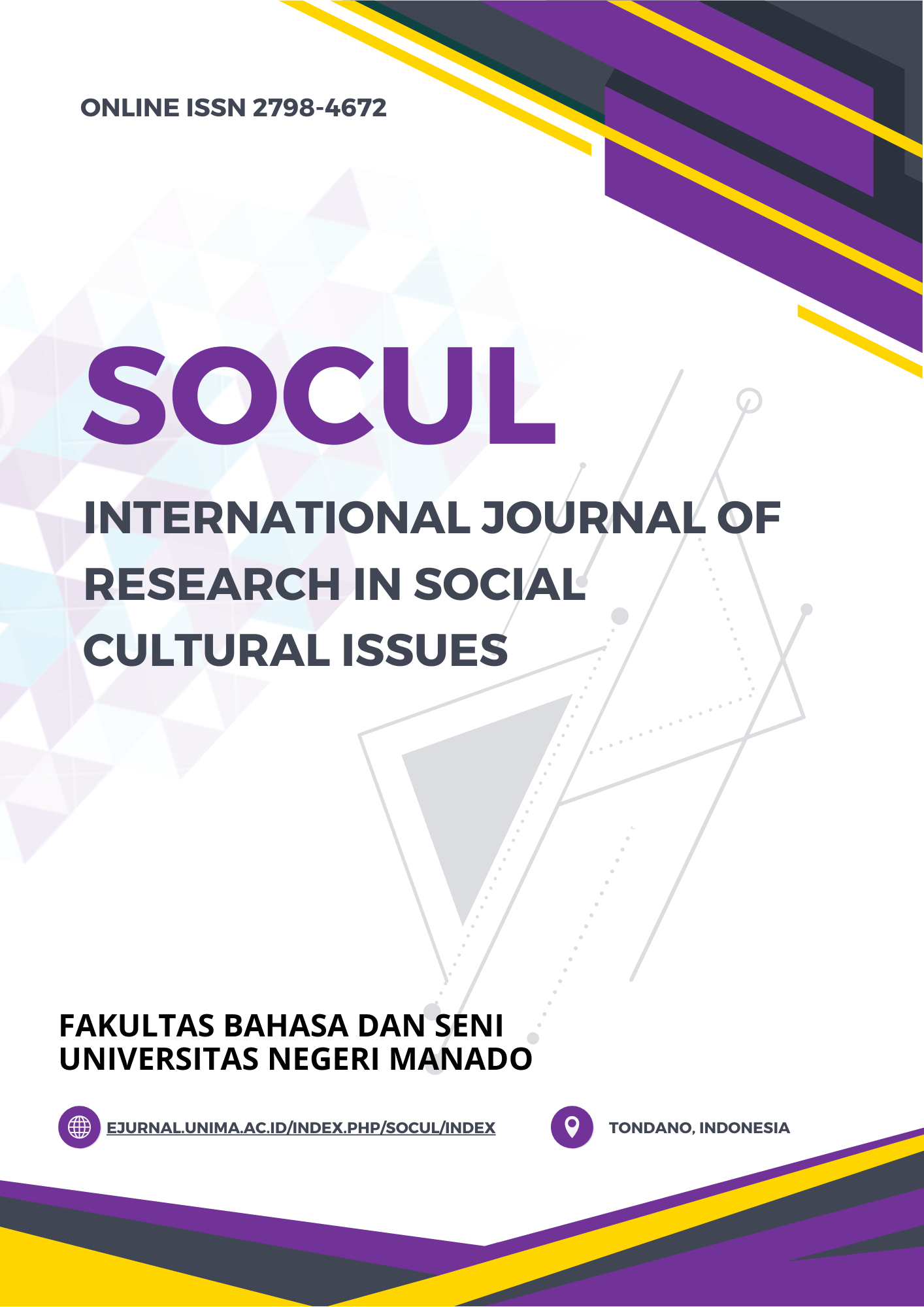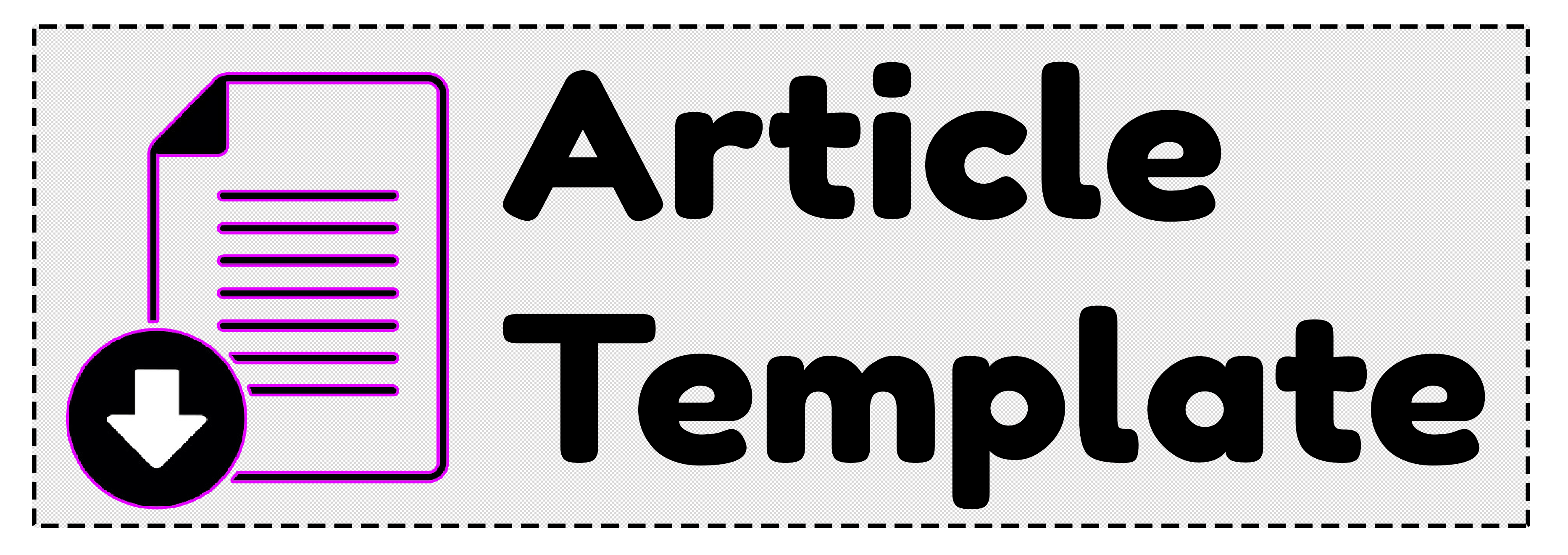GENDER INEQUALITY REFLECTED IN SHORT STORY SWEAT BY ZORA NEALE HURSTON
DOI:
https://doi.org/10.53682/soculijrccsscli.v4i2.9911Keywords:
Gender Inequality, Feminist Approach, Short Story, Qualitative Method, Women's RightsAbstract
This study aims to find out the evidence of gender inequality experienced by Delia Jones in Zora Neale Hurston’s Sweat. The writer used a qualitative method in conducting this research. In collecting data, the writer uses two sources: the first is primary source, namely the literary work Sweat by Zora Neale Hurston, while secondary sources are references such as journals, books, and internet sources related and relevant to the research. In data analysis, the writer uses a feminist approach to analyze gender inequality. The result shows that Delia’s life as the main female character experiences several types of gender inequality that she must face in her life, such as marginalization, subordination, and violence. She can finally feel happy because she can be free from the threats that bind her. Her patience and wisdom brought her to safety. The writer hopes that through this research, readers can learn not to think that gender inequality is common because, basically, women have the same rights as men and should use wisdom to fight for life when our strength is limited.
References
Abrams, M. H. (1984). A glossary of literary terms (135th ed.).
Abrams, M. H. (1999). A glossary of literary terms (7th ed.).
Brikets, S. P. (1993). Literature: The evolving canon. Massachusetts.
Chafetz, J. S. (1991). The gender division of labor and the reproduction of female disadvantage: Toward an integrated theory. Journal Name, 5(2).
Damayanti, I. (2022). Gender inequality in “The Chrysanthemums†by John Steinbeck. In Proceedings (pp. 128–135).
Fatmariza. (2010). Indikator dan isu gender dalam kurikulum. In Proceedings.
Friedan, B. (2010). The feminine mystique. New York: W. W. Norton & Company, Inc.
Hudson, W. (1965). An introduction to the study of literature. London: George Harrap & Co. Ltd.
Mansour, F. (1999). Analysis gender dan transformasi sosial (1st ed.). Pustaka Pelajar.
Mansour, F. (2013). Analysis gender dan transformasi sosial (2nd ed.). Pustaka Pelajar.
Maryam, L., Astuty, L., & Pradana, A. (2022). An analysis of gender inequality on black women characters in Hidden Figures film. Literary Criticism, 9(1). https://jurnal.unived.ac.id/index.php/jlc/article/view/2761
Marzuki, M. (2007). Kajian tentang teori-teori gender. Jurnal Civics: Media Kajian Kewarganegaraan, 4(2). https://doi.org/10.21831/civics.v4i2.6032
Miles, M. B., Huberman, M. A., & Saldaña, J. (2014). Qualitative data analysis: A methods sourcebook (1st ed.).
Mosse, J. C. (2007). Gender & pembangunan (5th ed.). Rifa Annisa Women’s Crisis Centre & Pustaka Pelajar.
Nasaruddin, U. (1999). Argumen kesetaraan gender perspektif Al-Qur’an.
Nurgiantoro, B. (2010). Teori pengkajian fiksi (Y. Wuryanti, Ed.). Gadjah Mada University Press.
Nurna. (2015). Ketidakadilan gender dalam novel Geni Jora karya Abidah. Jurnal Humanika, 15(3).
Ramadhan, Y. Z. (2019). Gender stereotypes in Moana (2016): A film analysis of the main character. Passage, 7(1), 140–162.
Sugiyono. (2015). Metode penelitian kombinasi (mixed methods). Bandung: Alfabeta.
Webster, N. (1989). Encyclopedic unabridged dictionary of the English language. New York: Forthland House.
Wurangian, M. M. A. M., Mamentu, A. C., & Andries, F. A. (2023). Gender inequality in Charlotte Bronte’s Jane Eyre. JoTELL Journal of Teaching English, 2(2).














